The National Baseball Hall of Fame and Museum is closed to the public due to the coronavirus pandemic, and this year's Induction Weekend festivities have been canceled. Nonetheless, the hall of fame that so many of us visit in our mind's eye -- whenever we take stock of greatness or steep ourselves in history -- is open year-round, even (or especially) when a trip to Cooperstown isn't possible. And right now, amid this MLB- and induction-free stretch, we're wondering who the next Hall of Famer for each team might be.
For this exercise, I've chosen one player per team, generally the most worthy pending honoree, whether he's on the upcoming writers ballot, still active or not yet eligible for such inclusion, or stuck in Era Committee limbo. For each, the idea is to choose a player who's good enough for the Hall and could plausibly wear that team's hat on his plaque; that doesn't have to be a certainty. For a few teams, finding such a player means looking at an active one who still has a ways to go but has a reasonable shot at getting there.
As with most Hall-related topics, I'm consulting my JAWS (Jaffe WAR Score) system, which takes the average of a player's career WAR and seven-year peak WAR (Baseball-Reference.com version for both) for comparison to that of the average Hall of Famer at his position. I'm open to considering other factors such as postseason player and historical importance, and for PED-related candidates, I'm inclined to penalize only those players whose infractions date to the testing-and-suspension era (2004 onward) -- but that's not to say all voters feel the same way.
I've divided the players into three groups: "Overdue" (deserving players on the current BBWAA ballot or likely to be on the next appropriate Era Committee ballot), "On the way" (active or recently retired players awaiting their time on the ballot) and "OK, we'll see" (active players who have significant work to do before they fit into the other two categories). Within each group, I've alphabetized by the team the player is representing.
ARI | ATL | CHC | CIN | COL
LAD | MIA | | MIL | NYM | PHI
PIT | SD | SF | STL | WSH
Overdue
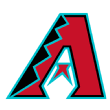 Arizona Diamondbacks: Curt Schilling
Arizona Diamondbacks: Curt Schilling
He's arguably more identified with the Red Sox for helping to break the Curse of the Bambino (and winning again in 2007), but Schilling was the co-MVP of the Diamondbacks' 2001 World Series win. He totaled 25.9 WAR in the equivalent of three full seasons of work in Arizona, 8.2 more than in his four seasons in Boston; he was also twice runner-up in the Cy Young race there, compared to once in Boston.
Leaving aside the caustic persona that has slowed his pace to Cooperstown, his outstanding run prevention, strikeout rate and the best strikeout-to-walk ratio since the pitching distance moved to 60-foot-6 all translate into a pitcher who ranks 28th in JAWS, 2.5 points above the standard -- and that's without any bonus for being the best postseason pitcher of his generation. Having received 70% on the 2020 ballot, he's poised to enter next summer; only his own mouth can stop him.
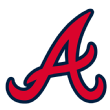 Atlanta Braves: Andruw Jones
Atlanta Braves: Andruw Jones
The Braves' 1991-2005 dynasty claimed 14 NL East titles, four pennants and a championship, and is already well-represented in Cooperstown via the trio of aces (Tom Glavine, Greg Maddux and John Smoltz), slugging third baseman Chipper Jones and manager Bobby Cox. Nonetheless, the period's defensive star, center fielder Andruw Jones, is on the outside looking in -- an injustice given that the success of the less-strikeout-oriented Glavine and Maddux owed much to the work of the fielders behind them, nobody more so than Jones.
A 10-time Gold Glove winner whose 236 fielding runs are tops at the position (51 ahead of Willie Mays), Jones clubbed 434 homers as well, and ranks 11th at the position in JAWS despite compiling just 1.7 WAR during ages 31-35 and then drifting to Japan. That fadeout, and a general wariness of defensive metrics, has limited his support to a maximum of 19.4% on the ballot through his first three years of eligibility.
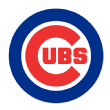 Chicago Cubs: Sammy Sosa
Chicago Cubs: Sammy Sosa
A towering figure in baseball's return from the strike, Sosa was just the sixth player to reach 600 home runs. His 51.2 JAWS is six points below the right-field standard, but his 43.8 peak score is 1.4 wins above. Of course it's more complicated than that, but so long as the Cubs and MLB hold on to the money they made while he carried the sport on his broad shoulders, I'm loath to dismiss Sosa
During David Ortiz's farewell tour, commissioner Rob Manfred disavowed the supposedly anonymous survey test that he reportedly failed, on the grounds that some disputed results were never resolved because the threshold to implement testing had been reached. That's the only thing directly implicating Ortiz as a PED user, and the same is true for Sosa, who was never shown a similar courtesy by the commish.
 Colorado Rockies: Todd Helton
Colorado Rockies: Todd Helton
This one's easy, particularly after the election of Larry Walker. Helton spent his entire 17-year career with the Rockies, making five All-Star appearances, collecting 2,519 hits and 369 home runs, and hitting a combined .316/.414/.539 while helping the team to its first pennant in 2007 plus another playoff appearance two years later. Yes, his numbers are inflated a bit by Coors Field, but his 133 OPS+ is excellent. Combine that with exceptional defense (+76 runs) and you have a player who's 15th in JAWS at first base overall (just 0.6 points below the standard) and 11th in seven-year peak (a hefty 3.9 WAR above the standard). He'll be on my ballot come December.
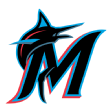 Miami Marlins: Gary Sheffield
Miami Marlins: Gary Sheffield
The Fish have made a habit of not keeping anybody around long enough to be particularly identified with the franchise, but two nomadic players from their 1997 championship squad are plausible Hall candidates who could even be shoehorned into wearing caps if the occasion so required it, namely Sheffield and Kevin Brown. Both would have to overcome pre-testing era PED connections -- BALCO in the case of the former, the Mitchell report in the case of the latter.
Sheffield spent more time in teal (from mid-1993 to mid-1998) and has the stronger case. The fierce, quick-wristed slugger of 509 home runs is tied for 47th all time with a 140 OPS+ and is 23rd among right fielders in JAWS, his ranking knocked down by outlier defensive metrics that are worth a bit of skepticism. He just climbed to 30.5% on the 2020 ballot, his sixth -- higher than Mark McGwire, Manny Ramirez or any other PED-linked position player this side of Barry Bonds has polled.
 Philadelphia Phillies: Dick Allen
Philadelphia Phillies: Dick Allen
His two stints in Philadelphia were no picnic, but Allen is the best eligible hitter not named Bonds outside the Hall; his career 156 OPS+ puts him in a virtual tie for 14th with Mays and Frank Thomas, and one point ahead of Hank Aaron, Joe DiMaggio and Mel Ott. A seven-time All-Star, Rookie of the Year and MVP winner, he led the league in slugging percentage and OPS+ three times apiece. The injuries and other issues that cut short his career left him with just 1,848 hits, a problem in that nobody from the post-1960 expansion era who finished with fewer than 2,000 hits has been elected by the writers or the small committees, though somebody has to go first.
The Phillies' handling of Allen, particularly early in his career, may have played a significant role in what was by his own admission, pre-game drinking. "Instead of going straight to the ballpark, I started making regular stops at watering holes along the way," he wrote in his 1989 autobiography. Among other things, the team sent him to integrate Arkansas baseball just six years after the state's court-ordered desegregation; Curt Flood called heavily segregated Philadelphia "America's northernmost Southern city," in refusing to report after being traded for Allen in a 1969 blockbuster; and his managers did a poor job of shielding him from a media that wouldn't even call him by his name of choice. Those managers have vouched for his not being nearly the divisive presence that some outsiders (including Bill James) have made him out to be. He was an elite player who deserved better.
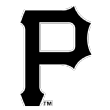 Pittsburgh Pirates: Barry Bonds
Pittsburgh Pirates: Barry Bonds
I'm fudging a bit here, because, well, it's been a long time since the Buccos last produced a player worthy of strong consideration for Cooperstown. Bonds played only the first seven seasons of his 22-year career in Pittsburgh, but in that time he helped the Pirates to three straight NL East titles, won two MVP awards and showed off the elite power-speed-defense combination that elevates him into the discussion for the best all-around player ever. He had the first two of his five 30-homer/30-steal seasons (a total that ties him with his father, Bobby Bonds, for the all-time lead), and the first two of his eight 9-WAR seasons as well. For those who would prefer to think less about the sideshow that his pursuit of home run record turned into, well, this version of Bonds was a lot more fun.
On the way
His performance has dipped significantly over the past two seasons; last year, he managed just a .411 slugging percentage and a 98 OPS+, but Votto is a six-time All-Star and MVP winner with a career .307/.421/.519 batting line. His career 150 OPS+ ranks ninth among first basemen with at least 7,000 PA, while that .421 on-base percentage ranks him 13th among all players at that same cutoff. Those rankings will fall if his decline continues, but even so, he's signed through 2023, and his counting stats will gain some cushioning from their current levels (1,866 hits and 284 homers). More important, he's already 14th in JAWS (54.4, 0.4 below the standard) and ninth in peak (46.9, 4.2 above the standard). Already a favorite among stat-minded writers, he'll be in fine shape when he reaches the ballot later this decade.
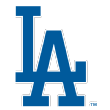 Los Angeles Dodgers: Clayton Kershaw
Los Angeles Dodgers: Clayton Kershaw
Though he's just 32 and hasn't made 30 starts in a season since 2015, Kershaw owns three Cy Young Awards and is just 0.3 shy of the peak standard for starters (50.0); his 58.8 JAWS ranks him 37th among all starting pitchers, 2.8 points below the standard but ahead of the likes of post-expansion BBWAA honorees such as Jim Palmer, Roy Halladay and Juan Marichal, not to mention both Don Drysdale and Sandy Koufax. He's 31 wins away from 200, and 536 strikeouts away from 3,000; he should be able to reach both while still in his mid-30s even if he's no longer the 200-inning workhorse he once was. While he can't undo the rough spots in the postseason, they won't keep him out of Cooperstown, and someday, perhaps against a team that's not stealing signs illegally, he'll win that elusive championship.
 New York Mets: Carlos Beltran
New York Mets: Carlos Beltran
He resigned as manager before he could pilot the team for a single game due to his role in the Astros' sign-stealing scandal, and his 2005-11 tenure in Queens had its own share of controversies, but Beltran has strong credentials. He slugged 434 homers, stole 312 bases (at an elite 86.4% clip) and played above-average defense in center field en route to three Gold Gloves and nine All-Star selections. He's ninth at the position in JAWS, and by that metric is the best center fielder outside the Hall beyond the still-active and currently fifth-ranked Mike Trout. The question is how harshly he should be judged for a transgression for which no player was suspended, and for which a relatively new set of rules wasn't being enforced -- a situation not unlike that of pre-testing-era PED users.
 St. Louis Cardinals: Albert Pujols
St. Louis Cardinals: Albert Pujols
Scott Rolen has a strong case for Cooperstown, and many feel the same way about Yadier Molina, but Pujols is a slam dunk thanks to what he did with the Cardinals from 2001 to 2011, and when he's elected, he'll be wearing the St. Louis logo. A three-time MVP and two-time champion, he's in the company of Aaron, Mays and Alex Rodriguez as the only players with at least 3,000 hits and 600 homers, and he's second among first basemen in JAWS even while producing a net of -1.1 WAR over the past three seasons. Assuming he retires when his contract expires following the 2021 season, he'll head the Hall class of 2027.
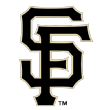 San Francisco Giants: Buster Posey
San Francisco Giants: Buster Posey
I nudged Bonds into the Pirates category not only due to the pittance of Pittsburgh alternatives but also to (re)make a point about Posey, who despite totaling just 12 homers and 3.9 WAR over the past two seasons has a Hall of Fame résumé that lacks only the longevity factor. He's a six-time All-Star and three-time World Series winner, with an MVP, Rookie of the Year and Gold Glove awards on his mantel. His seven-year peak of 37.0 WAR is tied for eighth best among catchers and is 1.9 WAR above that of the average enshrined backstop.
All of that's before considering his elite pitch framing, which isn't even accounted for in bWAR. He's 123 runs above average in FanGraphs' version, which goes back to 2008 -- seventh in total framing runs and fifth in terms of rate among catchers with at least 4,000 innings behind the plate. He does have just 1,380 hits, and getting to 2,000 could be a slog that involves a position change, not unlike the way it was for Joe Mauer.
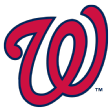 Washington Nationals: Max Scherzer
Washington Nationals: Max Scherzer
With the election of ex-Expo Larry Walker in January, the book is closed on the franchise's Canadian chapter as far as deserving honorees. The first player likely to enter the Hall as a National is Scherzer, a three-time Cy Young winner who needs 30 wins to reach 200 and 308 strikeouts to reach 3,000 -- both very doable even given that he turns 36 on July 27 and won't get a full season in 2020.
Scherzer's 54.3 JAWS is 7.3 points below the standard, but he's still pitching at an elite level; what's more, no three-time Cy guy besides the PED-linked Roger Clemens is outside the Hall, and likewise no 3,000-strikeout club members besides Clemens and Schilling, the 2021 ballot's most likely honoree. If he pitches through his age-40 season (2025), Scherzer would reach eligibility on the 2031 ballot.
OK, we'll see
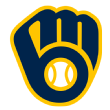 Milwaukee Brewers: Christian Yelich
Milwaukee Brewers: Christian Yelich
With the 2020 Modern Baseball Era Committee election of Ted Simmons, the Brewers don't have anybody closely identified with them who's worthy of significant Hall consideration unless you count CC Sabathia, who made just 17 starts for their 2008 team while helping them snap a 25-year streak of missing the playoffs. Instead, we'll have to consider what might happen, in which case it's worth turning attention to Yelich, who has spent the past two seasons as the NL's best answer to Trout.
Yelich is just 28 years old with seven seasons under his belt, and his 31.8 WAR peak score is still almost 10 wins shy of the standard (41.7). Four of those seasons are worth 3.8 WAR or less, with the lowest one, his abbreviated 2013 rookie campaign, at 1.6, and so even a trio of 5-win seasons would close the gap pretty quickly. To put it another way, the list of post-World War II Hall of Fame outfielders with less than 31.8 WAR through their age-27 seasons includes Roberto Clemente, Vlad Guerrero, Tony Gwynn, Ralph Kiner, Jim Rice, Billy Williams and Dave Winfield.
 San Diego Padres: Manny Machado
San Diego Padres: Manny Machado
His first year in San Diego was hardly spectacular, but the 27-year-old Machado has laid down some serious tracks toward Cooperstown. His 36.7 WAR through his age-26 season is second among all third basemen to that point, behind Eddie Mathews, and his 35.1 WAR peak score has three soft seasons (including last year's 2.6 WAR) that should easily be surpassed, pushing him toward the peak standard of 43.1.
With 204 homers already notched, 400 seems likely barring injuries, and he's got a decent shot at 500. And with nine more years in San Diego -- at least according to his contract -- he'll have a case to go in as a Padre instead of as an Oriole.

